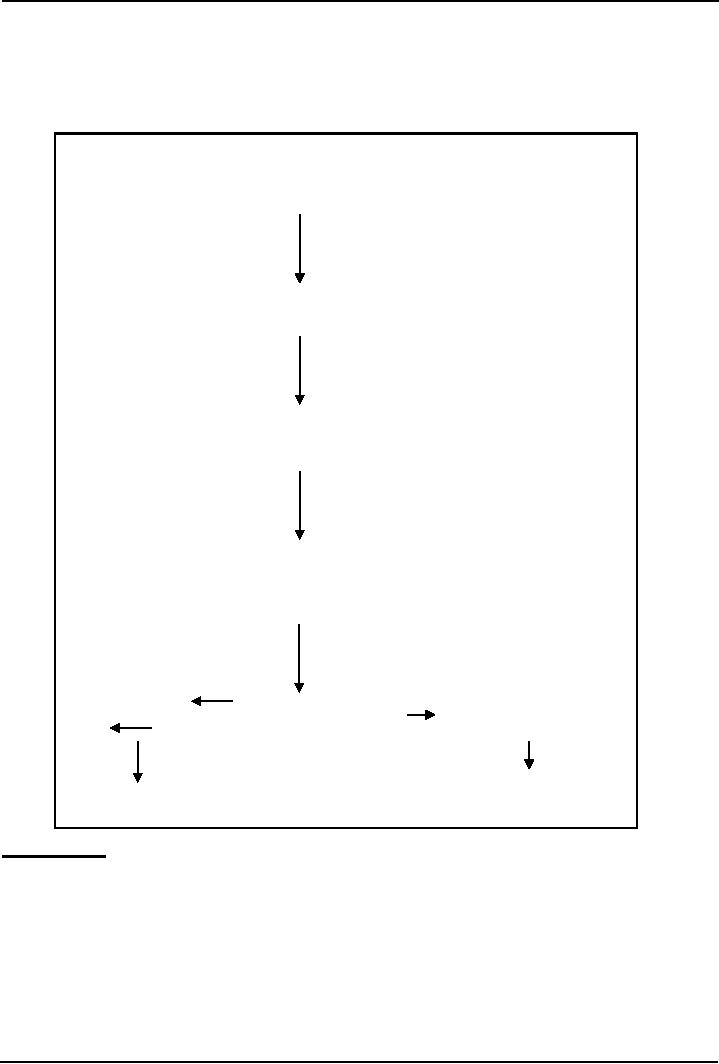 |

Social
Psychology (PSY403)
VU
Lesson
39
GROUP
BEHAVIOR
A
few topics from previous
topic (Prosocial Behavior)
Any
gender differences in
helping?
Alice
Eagly and Maureen Crowley's
(1986) indicate that men and
women differ in their
willingness to
engage
in certain prosocial actions:
Eagly
& Crowley's (1986) meta-analysis of
172 studies:
·
Men
are more likely to engage in
helping that is heroic and
chivalrous.
·
Men
are more likely to help
strangers--especially if the person
needing help is female, if
there's an
audience,
and if the situation is dangerous.
·
Women
are more likely than
men:
·
to
provide social and emotional support to
others (Shumaker & Hill,
1991)
·
More
willing to serve as caretakers
for children and the elderly
(Trudeau & Devlin,
1996).
·
Although
these differences appear
real, the help men render
apply most to nonroutine
prosocial
acts
such as offering help to
strangers in distress. When
other forms of prosocial
behavior--
such
as helping a friend or caring
for children--are studied,
women generally prove to be
more
helpful
than men.
·
These
differences become stronger from
childhood to adulthood and are
most apparent when
gender
roles are salient.
Applied
Social Psychology
Lab
Can
social psychology knowledge
enhance prosocial
behavior?
·
Learning
about the barriers to helping: (Arthur
Beaman & his colleagues (1978)
randomly assigned
students
to listen to either a lecture on
bystander intervention or a neutral
topic.
·
A
total of 43% learning about
the paralyzing effects of fellow bystander
stopped to help a
person
lying
on the ground 2 weeks
later.
·
Jane
Piliavin says that in our
society we are trained to
leave people alone and mind
our own
business.
·
In
their classes when Jane
Piliavin and her colleagues discussed
this research students
repeatedly
report
an increased attentiveness and responsiveness to
emergencies. Make people
aware of
barriers
and unlock their prosocial
tendencies
·
Jane
Piliavin stressed the need of
knowledge-created awareness of the social
dynamics of
emergency
situations so that people
could unlock their prosocial
tendencies.
Group
Behavior Lesson 39
Aims
To
introduce the psychological effects of
being in a group and of interacting
with others on an
inter-
individual
level
Objectives
·
To
describe basic features of
groups
·
To
discuss effects of group on
individuals
·
Describe
social facilitation
Chapter
Summary
This
chapter presents several topics related to
group behavior, including the effects of
the presence of
others
on an individual's performance; key
features of groups; group performance and
decision-making;
competition,
cooperation, social dilemmas; and leadership. Social
facilitation, social inhibition, and
social
163

Social
Psychology (PSY403)
VU
loafing
are discussed and compared
in terms of how behavior can
be affected by the presence of others
and
by
the complexity of the task. Evaluation apprehension
and the distraction-conflict model are
presented in
this
context. Social impact
theory is put forth as a general
explanation for the influence
that others have
upon
us, noting how the strength,
number, and immediacy of observers
can influence behavior. The
effects
of
crowding and deindividuation are
also noted. A group is
defined as a social unity in
which people are
interdependent
and interacting, and is distinguished
from a crowd, an audience, or other
collections of
individuals.
The basic features of groups
are their structure (roles,
norms, and status) and
their
cohesiveness.
How groups perform on tasks,
including performance and decision-making, is
discussed,
with
a focus on biased use of information in
groups, potentially leading to group
polarization and
groupthink.
Cooperation and competition and their
determinants, including reward structure,
personal
values,
communication patterns, and reciprocity,
are also described, and social dilemmas
are considered.
Finally,
the topic of leadership is discussed from
the standpoint of personality
characteristics, situational
demands,
and the interaction between the two. The
chapter concludes with a presentation of
recent
research
on gender and leadership.
What
is a group?
·
Two or
more people who interact
with one another, share common goals,
are somehow
interdependent,
and recognize that they belong to a
group
·
Here
the focus is on the effects of physically interacting
regularly in a work group,
team, etc. and
the
effects this has on productivity
(i.e., vs. social
categorization)
Basic
Features of Groups
Social
norms are
shared rules and expectations about how
group members should act.
Some groups have
norms
for personal appearance, opinions
(no involvement in religious or
political activities in
universities,
etc.)
behavior (smoking prohibition in
university). Sometimes written
guidelines are provided
regarding
these
norms, while on other
occasions they are learned
through everyday conversation.
For example, in
Sherif's
Robber's Cave experiments norms were
developed in "Rattlers" and "Eagles"
soon after
construction
of their groups. Social norms
increase conformity and reduce
deviancy within group.
They
also
enhance performance by rewarding
efficiency, effort, and
quality.
Social
roles are
clusters of socially defined expectations
that individuals in a given
situation are expected to
fulfill.
Sometime social roles evolve during group
interaction; sometime people
import their role into
their
new
group that they enjoyed
playing in previous groups.
Social
status refers to social
position based on prestige and authority
and distribution of power among
members.
You can tell who has
higher status in a group by
paying attention to verbal and
nonverbal
behavior.
Usually people with higher
status maintain great eye contact, stand
more erect, are more likely
to
criticize
and command, and not only
speak more but are also
spoken to more. The social status
often is
ascribed
rather than earned. There
are many advantages to
having high status in a
group. These people
have
high
self-esteem, are better
liked by others, and are more
satisfied with their group
relations. However, in
case
of bad decisions causing negative group
consequences, they are
judged rather harshly.
Cohesiveness
refers to
forces that cause members to
remain in a group. As group
cohesiveness increases,
people
feel, think, and act more
like group members and
less like isolated members.
This cohesiveness
allows
the group to exert its
influence on members, which
increases productivity.
Positive
factors associated with
cohesiveness:
·
Liking
of members for each
other
·
Extent
to which members act
effectively together
·
Success
of group in meeting goals
164

Social
Psychology (PSY403)
VU
Negative
factors associated with
cohesiveness:
·
Cost
of Leaving
·
Lack
of Alternatives
·
Group
influence on individual
behavior
Group
affecting individuals
The
following three phenomena can occur
with minimal interaction
(minimal group
situation)
Social
facilitation
An
individual performing an activity in the
presence of an audience
Social
loafing
An
individual performing an activity as
part of a larger group of
performers
Deindividuation
May
occur in crowded, anonymous situations
when people lose a sense of
responsibility for their
own
actions
and feel free to express
aggressive and sexual impulses
Social
Facilitation
·
The
enhancement of dominant responses due to
the presence of others
·
Norman
Triplett (1897) conducted one of the
first experiments investigating whether
the presence
of
others enhance performance
(cyclists).
·
Subsequent
studies conducted during the first
quarter of the 20th century
found that the presence
of
others
enhances the speed with
which people perform simple
tasks, but inhibits task
efficiency in
more
complex tasks (Allport,
1920)
·
Observed
also in animals (Chen, 1937) such as
dogs, rats, fish, birds, and
even ants and
cockroaches
Explanations
of social facilitation
effects
·
Drive
theory
·
Evaluation-apprehension
·
Distraction-conflict
·
Mere
exposure
Drive
theory of social facilitation
(Zajonce, 1965)
·
Researchers
attempted to answer that presence of
others should affect
differently in case of
easy
and
complex tasks. Zajonce proposed a
theory to reconcile the contradictory
findings.
·
All
animals are genetically predisposed to
become physiologically aroused
when around
conspecifics
(members of one's own
species) because they receive
most of the rewards
and
punishments
from them, and have developed an innate
arousal response due to their mere
presence
·
Correct
responses are dominant in
case of easy tasks, but
correct responses are not
dominant in
case
of difficult, unless memorized, like math
test or learning maze
(difficult) vs. clapping
(easy).
·
Increased
arousal enhances performance on easy task,
increased arousal promotes
incorrect
responding
in case of complex
tasks.
·
This,
in turn, increases the tendency to make a
dominant (well learned)
response.
·
If
the response correct - social
facilitation, if incorrect -
inhibition
165

Social
Psychology (PSY403)
VU
Figure
1: Zajonce's theory of social
facilitation
Processes
Leading to Social Facilitation versus
Social
Inhibition
·
Zajonc's theory:
If
dominant
response
correct,
SOCIAL
FACILITATION
Presence
Dominant
If
dominant
Arousal
of
other s
R
esponse
response
wrong,
SOCIAL
INHIBITION
Further
research to test Zajonce's
theory
Two
separate meta-analyses of more than
300 experiments involving more than
25,000 participants
confirmed
(Bond & Titus, 1983;
Guerin, 1986)
Michaels
et al. (1982)
·
A
study of pool players in a
college student union
·
Unobtrusively
identified students either
above or below average in
their ability to shot
(without an
audience
present); students' shooting accuracy was
recorded.
·
Then
several rounds with 4 confederates
closely watching
·
Good
players' accuracy in making
shots increased (from 71% to
80%) while others
observing,
while
that of poor performers deteriorated
(from 36% to 25%)
·
In
probably the most novel
extension of all, Zajonce
demonstrated that facilitation and
inhibition
were
not limited to humans. He placed
cockroaches on either runways (a
simple task) or in mazes
(a
complex task) and measured their
running speed when either
alone or in the presence of a
gallery
of
other roaches. Supporting
previous research, the presence of
other roaches did indeed
facilitate
performance
on the runway task, whereas it hampered
performance in the mazes.
·
We
become energized in front of others
unless we are self conscious
or hyperaroused.
Evaluation
apprehension
·
Concern
over being judged by others
(Cottrell, 1972)
Cottrell
et al., 1968
·
Counter
to the `mere-presence' effect
·
Performance
was evaluated in three different
conditions: working alone, in the
presence of
confederates
working on the same task, in the presence
of blindfolded who supposedly were
performing
for a perception test
·
As
compared to being alone,
with seeing subjects,
participants were having both
evaluation
apprehension
and mere exposure.
·
With
blindfolded, however, no evaluation
apprehension as blindfolded could not
evaluate the
participant's
performance.
·
If
people present, but not
evaluating, no social facilitation
occurs
Distraction-conflict
explanation
·
Social
facilitation also found in animals.
Does this mean that
insects worry about other
insects
evaluating
them? This probability is
unlikely.
·
Conflict
is a well-documented source of arousal, and in
such a situation it is the distraction
conflict
alone
that creates arousal.
·
Heightened
arousal occurs due to conflict between
the task at hand and attending to
others in the
immediate
surroundings (Baron,
1986)
166

Social
Psychology (PSY403)
VU
·
Can
explain social as well as non-social
`distractions' (e.g., loud noises,
flashing lights, etc.)
·
Overall,
all three theories (drive, evaluation
apprehension, and distraction conflict)
can contribute
to
the explanation of social facilitation/
inhibition
Distraction-conflict
theory
Presence
of others
or
novel stimuli
Distraction
Attention
conflict
Heightened
arousal
If
dominant
If
dominant responses
Enhancement
of
responses
are
are
incorrect in present
Dominant
responses
Correct
in present
Situation
Situation
Performance
is
Performance
is
inhibited
enhanced
Mere
presence
·
Zajonce
contends that even without
evaluation apprehension and arousing
distraction, mere
presence
of others produces some
arousal.
·
People's
colour perceptions are stronger when
they make judgments with
others present
(Goldman,
1967)
·
Most
joggers are energized when jogging
with others even without any
competition
·
·
Current
trend in organizations is to have an
"open-office plan". Rather than
private offices, open
areas
are divided with low
partitions. The presence of
others may boost the performance of
well-
learned
tasks, but disrupt creative
thinking.
167

Social
Psychology (PSY403)
VU
Activity:
Recognizing a group
1.
Audience in a large
auditorium
2.
A family eating dinner
together
3.
All members of the rotary
club
4.
Residents of the same
dorm
5.
Members of a cricket
team
6.
A construction crew building a
highway
7.
People riding an elevator
together
8.
Acquaintances standing in line for
tickets
9.
All citizens of Pakistan
10.
All people in cars waiting to
pay their tolls at
motorway
11.
A mob of protestors at a demonstration
12.
Two strangers speaking on the
telephone
Note:
Those underlined in the above list
satisfy the criteria required
for considering a collection
of
individuals
as a group.
Reading
·
Franzoi,
S. (2003). Social
Psychology. Boston:
McGraw-Hill. Chapter 10.
Other
Readings
·
Lord,
C.G. (1997). Social
Psychology. Orlando:
Harcourt Brace and Company. Chapter
8.
·
David
G. Myers, D. G. (2002). Social
Psychology (7th ed.).
New York:
McGraw-Hill.
·
Taylor,
S.E. (2006). Social
Psychology (12th ed.). New York: Prentice
Hall.
168
Table of Contents:
- INTRODUCTION TO SOCIAL PSYCHOLOGY:Readings, Main Elements of Definitions
- INTRODUCTION TO SOCIAL PSYCHOLOGY:Social Psychology and Sociology
- CONDUCTING RESEARCH IN SOCIAL PSYCHOLOGY:Scientific Method
- CONDUCTING RESEARCH IN SOCIAL PSYCHOLOGY:Evaluate Ethics
- CONDUCTING RESEARCH IN SOCIAL PSYCHOLOGY RESEARCH PROCESS, DESIGNS AND METHODS (CONTINUED)
- CONDUCTING RESEARCH IN SOCIAL PSYCHOLOGY OBSERVATIONAL METHOD
- CONDUCTING RESEARCH IN SOCIAL PSYCHOLOGY CORRELATIONAL METHOD:
- CONDUCTING RESEARCH IN SOCIAL PSYCHOLOGY EXPERIMENTAL METHOD
- THE SELF:Meta Analysis, THE INTERNET, BRAIN-IMAGING TECHNIQUES
- THE SELF (CONTINUED):Development of Self awareness, SELF REGULATION
- THE SELF (CONTINUE…….):Journal Activity, POSSIBLE HISTORICAL EFFECTS
- THE SELF (CONTINUE……….):SELF-SCHEMAS, SELF-COMPLEXITY
- PERSON PERCEPTION:Impression Formation, Facial Expressions
- PERSON PERCEPTION (CONTINUE…..):GENDER SOCIALIZATION, Integrating Impressions
- PERSON PERCEPTION: WHEN PERSON PERCEPTION IS MOST CHALLENGING
- ATTRIBUTION:The locus of causality, Stability & Controllability
- ATTRIBUTION ERRORS:Biases in Attribution, Cultural differences
- SOCIAL COGNITION:We are categorizing creatures, Developing Schemas
- SOCIAL COGNITION (CONTINUE…….):Counterfactual Thinking, Confirmation bias
- ATTITUDES:Affective component, Behavioral component, Cognitive component
- ATTITUDE FORMATION:Classical conditioning, Subliminal conditioning
- ATTITUDE AND BEHAVIOR:Theory of planned behavior, Attitude strength
- ATTITUDE CHANGE:Factors affecting dissonance, Likeability
- ATTITUDE CHANGE (CONTINUE……….):Attitudinal Inoculation, Audience Variables
- PREJUDICE AND DISCRIMINATION:Activity on Cognitive Dissonance, Categorization
- PREJUDICE AND DISCRIMINATION (CONTINUE……….):Religion, Stereotype threat
- REDUCING PREJUDICE AND DISCRIMINATION:The contact hypothesis
- INTERPERSONAL ATTRACTION:Reasons for affiliation, Theory of Social exchange
- INTERPERSONAL ATTRACTION (CONTINUE……..):Physical attractiveness
- INTIMATE RELATIONSHIPS:Applied Social Psychology Lab
- SOCIAL INFLUENCE:Attachment styles & Friendship, SOCIAL INTERACTIONS
- SOCIAL INFLUENCE (CONTINE………):Normative influence, Informational influence
- SOCIAL INFLUENCE (CONTINUE……):Crimes of Obedience, Predictions
- AGGRESSION:Identifying Aggression, Instrumental aggression
- AGGRESSION (CONTINUE……):The Cognitive-Neo-associationist Model
- REDUCING AGGRESSION:Punishment, Incompatible response strategy
- PROSOCIAL BEHAVIOR:Types of Helping, Reciprocal helping, Norm of responsibility
- PROSOCIAL BEHAVIOR (CONTINUE………):Bystander Intervention, Diffusion of responsibility
- GROUP BEHAVIOR:Applied Social Psychology Lab, Basic Features of Groups
- GROUP BEHAVIOR (CONTINUE…………):Social Loafing, Deindividuation
- up Decision GROUP BEHAVIOR (CONTINUE……….):GroProcess, Group Polarization
- INTERPERSONAL POWER: LEADERSHIP, The Situational Perspective, Information power
- SOCIAL PSYCHOLOGY APPLIED: SOCIAL PSYCHOLOGY IN COURT
- SOCIAL PSYCHOLOGY APPLIED: SOCIAL PSYCHOLOGY IN CLINIC
- FINAL REVIEW:Social Psychology and related fields, History, Social cognition